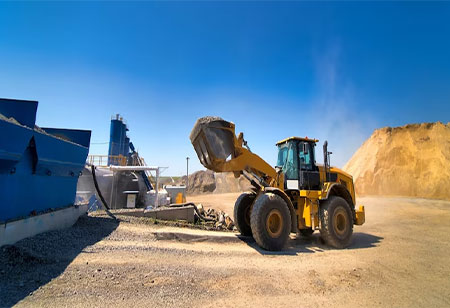
Working with heavy construction equipment comes with its own set of challenges and risks. As vital tools in construction projects, these machines demand careful attention and adherence to safety protocols. Whether you're an experienced operator or a newcomer to the industry, ensuring safety should be a top priority.
Here are five crucial safety tips to keep in mind when handling heavy construction equipment.
Individuals must undergo thorough training and proper certification before even considering operating heavy construction equipment like a John Deere skidder. This involves understanding the machine's controls, emergency procedures, and safety guidelines. Rigorous training ensures operators can confidently maneuver equipment, react to unforeseen situations, and protect themselves and others on the site.
1) Formal Training Programs: Enroll in recognized training programs institutions or equipment manufacturers provide. These programs cover the fundamentals of equipment operation, safety protocols, and hands-on practice.
2) Certification: Certification signifies an operator's competence and compliance with industry standards. Certification programs often involve written exams and practical assessments to understand equipment operation comprehensively.
Pre-operational equipment inspections are a non-negotiable safety measure that should be part of every operator's routine. Regular inspections identify potential issues and prevent hazardous situations from arising during operation.
1) Visual Inspection: Examine the equipment for visible damage, leaks, loose bolts, and worn-out parts. This includes checking tires or tracks, hydraulic systems, and structural components.
2) Fluid Levels: Ensure that all fluid levels, such as oil, coolant, and hydraulic fluid, are at the recommended levels to maintain proper functionality.
3) Brakes and Controls: Test brakes, joysticks, and controls to guarantee they respond effectively and smoothly.
4) Safety Features: Verify that safety features like seatbelts, lights, alarms, and backup cameras are functioning correctly.
5) Documentation: Maintain records of inspections, repairs, and maintenance activities. These records can be valuable for future reference and audits.
Effective communication on a construction site is essential to avoid misunderstandings, prevent accidents, and ensure smooth operations. Here's how to uphold clear communication:
1) Use Radios: Equip operators and team members with two-way radios to maintain constant communication, especially in noisy environments where verbal communication might be challenging.
2) Hand Signals: Implement standardized hand signals that operators and ground personnel can use to convey instructions or warnings.
3) Designate a Signal Person: When operating heavy equipment with limited visibility, designate a signal person to guide the operator, ensuring safe movement and positioning.
4) Daily Briefings: Conduct pre-shift briefings to discuss tasks, potential hazards, and safety protocols, promoting a shared understanding among the team.
Exceeding load capacity limits of heavy equipment can lead to catastrophic accidents, causing operator injury, equipment damage, and project delays. Here's how to prevent load-related incidents:
1) Know the Limits: Familiarize yourself with the manufacturer's load capacity specifications for each piece of equipment. This includes considering dynamic loads that may occur during operation.
2) Balance Loads: Distribute loads evenly across buckets, forks, or platforms to maintain stability and prevent tipping.
3) Use Load Charts: Consult load charts provided by the equipment manufacturer to determine safe operating limits based on factors such as reach, angle, and load weight.
4) Avoid Overloading: Always within the recommended load capacity of the equipment. If the load is too heavy, make multiple trips or use a larger machine.
A well-organized work area is the foundation of safety in the construction industry. Here;s why maintaining order is essential:
1) Reduced Hazards: Organized work areas minimize tripping hazards, prevent material or equipment accidents, and eliminate clutter-related risks.
2) Efficient Navigation: Clear pathways enable equipment and personnel to move smoothly, reducing the likelihood of collisions and obstructions.
3) Emergency Response: Organized spaces ensure quick access to safety equipment and escape routes in emergencies.
Safety should always be a top priority when handling heavy construction equipment. These five safety tips can significantly reduce the risk of accidents, injuries, and costly downtime. Proper training, thorough equipment inspections, clear communication, load capacity awareness, and maintaining organized work areas are vital steps toward ensuring a safe and productive construction environment. By prioritizing safety, construction teams can complete projects efficiently while safeguarding the well-being of everyone involved.
We use cookies to ensure you get the best experience on our website. Read more...